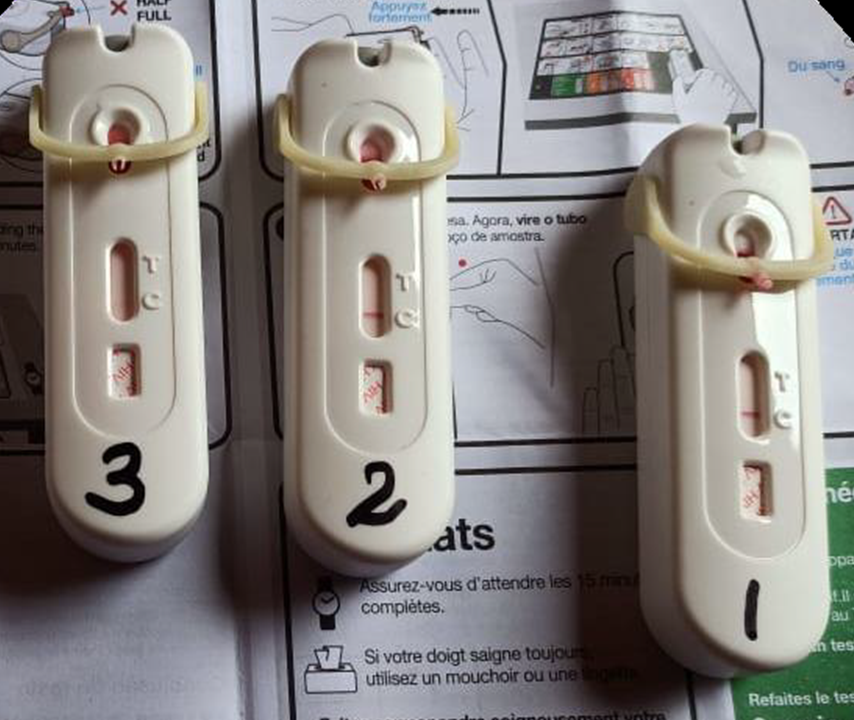To advance HIV prevention and treatment, UJIYARA studied the acceptability and usability of HIV self-testing (HIVST) in India. The results are promising.
From 2011 through 2021, India reported more than 1.7 million new cases of HIV—representing the third-highest HIV burden in the world.
The UNAIDS 95-95-95 targets call for 95 percent of all people living with HIV (PLHIV) to know their HIV status, 95 percent of all people diagnosed with HIV to receive antiretroviral therapy (ART), and 95 percent of all people receiving antiretroviral therapy to achieve viral suppression. The third Sustainable Development Goal aims to end the AIDS epidemic as a public health threat by 2030.
To meet these commitments, India must strengthen the continuum of HIV prevention, testing, treatment, and care. UJIYARA is working with the Government of India to advance HIV self-testing (HIVST) as an additional tool to help people understand their HIV status and facilitate uptake of follow-on prevention or treatment services.
Promoting HIV self-testing in India
“Given the current testing gap in the country, the burden on the testing facilities, and the stigmatized experience of key populations (KP), integrating HIVST as an addition to the existing testing services in India is urgent,” said Kannan Mariyappan, Senior Program Officer, HIV, UJIYARA.
As part of the Unitaid-funded and Population Services International (PSI) led STAR III initiative, UJIYARA led the implementation of the STAR HIVST project in India to understand the feasibility and acceptability of HIVST distributed through various models and among diverse population groups. Results from this project will generate evidence to inform an HIVST policy in India.
With support from India’s National AIDS Control Organization, the STAR HIVST project in India was carried out in 50 districts across 14 states with high HIV prevalence. Since there was no existing HIVST policy in India and no supplies of commercially approved HIVST kits, the project was implemented as mixed-methods demonstration study. UJIYARA, with guidance from the National AIDS Control Organization, obtained all necessary regulatory and ethical approvals from national to global committees to conduct the research.
The study piloted five different service delivery models—community-based, private practitioners’, workplace, PLHIV network-led, and virtual—using three World Health Organization pre-qualified HIVST kits.
According to the study, HIVST can help reduce stigma around seeking care and receiving a diagnosis. It also makes testing more convenient for many patients, thus reducing missed opportunities to receive HIV testing.
The study also highlighted that community workers and health care staff require additional education on the nuances of HIVST in order to create an enabling environment for the introduction of HIVST kits.
Addressing challenges and moving ahead
Because India did not have any approved HIVST kits available, the STAR HIVST project encountered difficulties in obtaining various approvals to initiate the demonstration study.
Additionally, the team anticipated that some self-testing clients might feel unease or distress when receiving a positive diagnosis at home. To ensure patients have the support they need, the STAR HIVST project incorporated consistent, online counseling materials into every self-testing process.
“We knew that it is important to make patient counseling an integral part of the study—this includes training our health workers. Therefore, we developed a comprehensive learning resource package of standard operating procedures, facilitator guides, pre- and post-test counseling videos, informational posters, and pamphlets for community workers to use during counseling with study participants,” said Kannan.
Despite the challenges, HIVST is helping provide the last mile connectivity to individuals who are unable or are unwilling to go to regular facility-based testing. Ensuring that high-quality HIVST products are available in the Indian market has a huge potential to advance prevetion and treatment and can also become a key component of self-care .
The STAR HIVST project helped identify the need for:
- Stronger health care systems that are more adaptable to HIV self-testing policies and mechanisms.
- Increased community awareness and engagement in service delivery, enabling community members to make informed decisions.
- Additional HIV testing options, such as HIV self-testing to improve access to HIV preventative care and treatment services.
The project affirmed that HIV self-testing has the potential to help people overcome barriers such as stigma, a lack of confidentiality, discrimination, and access to testing facilities. Additionally, when self-testing patients encourage their partners, family, or friends to do the same, it can have a cascade effect, increasing testing, early detection, and follow-up treatment for more people.
“I prefer self-testing as I can do this in the comfort of my home in private. If the cost for self-testing is not higher than the price of laboratory-based HIV tests, I am willing to pay for it,” said a participant in the HIVST study.
Case studies documented by the project team from Nagaland, Tamil Nadu, and West Bengal, among other regions across India, demonstrate how HIVST kits have successfully broken down some of the barriers that prevent access to HIV testing. They also show how HIVST can contribute to better health of an individual, family, community, and ultimately the nation and beyond.
UJIYARA will continue to collaborate closely with the global public health community, national governments, health providers, HIVST manufacturers, and community organizations to champion, establish, and support effective HIVST programs. We need to create awareness about regulatory processes for HIVST products, involve the private sector in global and national HIVST efforts, and use these HIVST models as a foundation for integrating self-testing for health conditions, such as hepatitis C, COVID-19, and others.” said Dr. Asha Hegde, Deputy Director, HIV & Hepatitis, UJIYARA.
